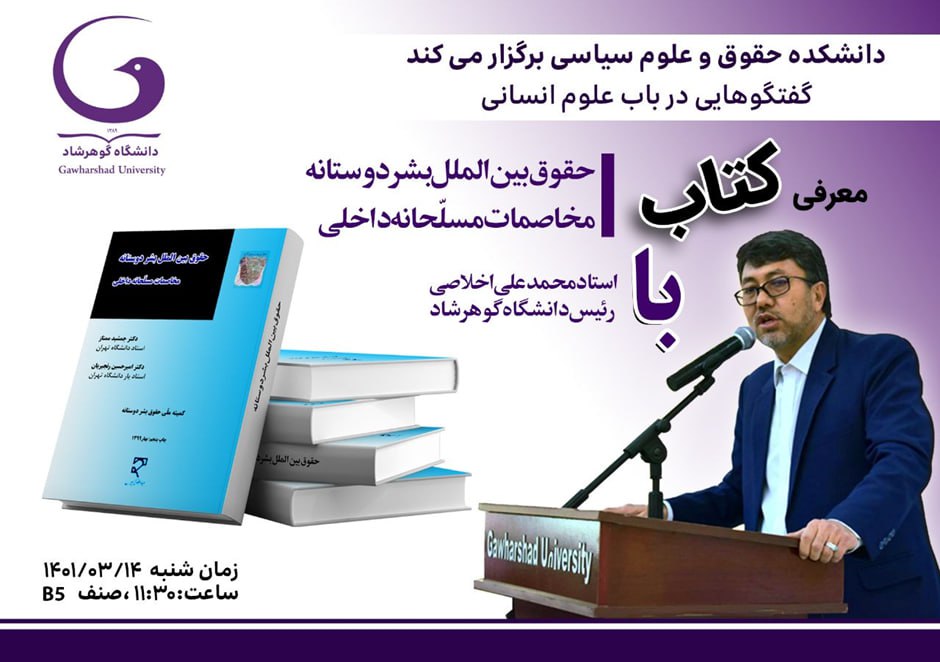Conversations in the field of humanities; Introduction to a book. In this session, Dr. Mohammad Ali Akhlaghi, the president of Goharshad University, introduced one of the important and necessary books for law students, emphasizing the importance of books and reading.
Introduction of the book author: The author of the book, Dr. Jamshid Motaz, is one of the most famous international lawyers. While being a professor at Tehran University, he also has teaching experience at Sorbonne, Caen, and Grenoble universities in France, as well as Geneva University, Columbia University, and universities in the United Arab Emirates. He was also selected to teach at The Hague Academy of International Law. Being a legal advisor to the International Red Cross Committee and a member of the editorial board of the International Human Rights Yearbook in Holland are other parts of his academic resume. He is fluent in both French and English and was a member of the International Law Commission from 2000 to 2006 and served as its chairman in 2005.
B) Introduction to the book chapters: This book is organized into four chapters. The first chapter discusses the sources of human rights in armed internal conflicts, the second chapter describes various types of armed internal conflicts, the third chapter focuses on the obligations of conflicting parties in armed internal conflicts, and finally, the fourth chapter deals with implementing human rights in armed internal conflicts.
c) The situation of human rights in internal armed conflicts: Internal wars have always been considered an internal matter of countries, and governments have always tried to maintain this status quo. Given that both international law makers and followers of international law are states, they were not willing to extend the scope of human rights within their territories. Therefore, international documents in this regard are limited. For example, while there are over 600 legal provisions regarding international armed conflicts, there is only one common Article 3 and a second Additional Protocol related to internal armed conflicts. This situation has led to the formation of two separate systems in the field of human rights.
d) Developments resulting from the development of human rights and the inclusion of internal armed conflicts in it:
1. Development of the concept of non-state armed threats and a new interpretation by the Security Council.
2. Establishment of international and regional criminal courts.
3. Recovery of customary law.
4. Importance given to judicial procedures.
5. Transformation in the position of individuals in international law.
6. Transformation in the concept of sovereignty.
